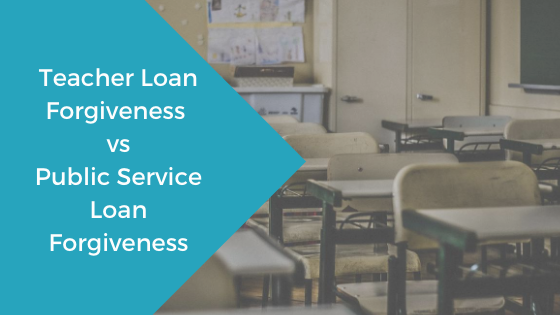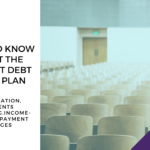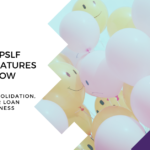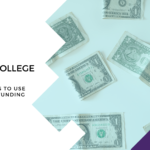This article is provides clear tips for loan forgiveness options for teachers. Throughout the coronavirus pandemic teachers switched from classroom to distance education in a matter of weeks. The new school year is looming and the safety of bringing students back in person is a major source of concern for both educators and students. The possibility of doing a mixed model represents more work for educators once again. Although this article doesn’t solve coronavirus challenges, it does help teachers get their well-deserved student loan forgiveness. Many teachers can be eligible for two types of student loan forgiveness programs, Teacher Loan Forgiveness (TLF) and Public Service Loan Forgiveness (PSLF). This post will focus on the differences between the two and tips for deciding which program makes the most sense for your situation.
Teacher Loan Forgiveness
Program Description: A federal program that forgives $5,000 or $17,500 of undergraduate student loans for highly qualified teachers who teach for five consecutive years in low-income school districts.
Eligible Loans: Any federal student loans used for undergraduate education
Eligible Repayment Plans: Any repayment plan
Time to Forgiveness: 5 years
Amount Forgiven: $5,000 or $17,500
Taxability: Not taxable
Public Service Loan Forgiveness
Program Description: A program that forgives the remaining balance of student loan debt for borrowers working in eligible government, tribal, or non-profit work, who make 120 months of eligible payments on eligible student loans.
Eligible Loans: Federal Direct Loans
Eligible Repayment Plans: Pay As You Earn (PAYE), Revised Pay As You Earn (REPAYE), Income-Based Repayment (IBR), Income-Contingent Repayment (ICR), technically the 10 year standard although there will be no remaining balance to be forgiven.
Time to forgiveness: 120 months
Amount Forgiven: Entire remaining balance of federal student loans
Taxability: Not taxable
You can’t pursue TLF and PSLF at the same time.
You have to choose the program that makes the most sense. It is possible to get forgiveness under both programs, but it isn’t efficient. Here’s why, PSLF forgives the entire remaining loan balance after 10 years. If you use TLF first and still pursue PSLF it takes 15 years to get your balance forgiven, not 10. You can’t work toward both programs at the same time, so the 5 years spent working toward TLF doesn’t coun’t toward the 10 required for PSLF.
Tips for deciding whether to pursue TLF or PSLF
- Make sure you have federal student loans. Private student loans aren’t eligible for either of these forgiveness programs.
- Identify if you actually could qualify for both programs. TLF is only for highly qualified teachers in low-income school districts while PSLF can cover any full-time employee at a non-profit or government school district.
- Think about whether you’ve already made progress toward either program. If you don’t have Direct loans or weren’t on the right type of repayment plan you haven’t made any progress toward PSLF but could have already made progress toward TLF.
- Look at your total loan balance. How much do you have in loans? Are they from undergraduate education or do you have graduate school loans included? If you have a small federal loan balance, <$30,000 that you borrowed for undergrad $17,500 of loan forgiveness may eliminate your entire balance in half the time of PSLF. If you have a high loan balance or a large amount of graduate loans, PSLF is likely a better fit.
- Think about how long you have left to repay your student loans. If you’re have less than 10 years left in repayment and haven’t made any qualifying payments for PSLF you’ll have your loans paid off before getting anything forgiven making TLF a better choice. But if you have 10 or more years left to repay, PSLF could make sense.
Your loan balance, loan types, and time left in repayment are key.
TLF best serves teachers with only undergraduate loans, relatively low balances of <$30,000, and less than 10 years of repayment left. While PSLF best serves teachers with a mix of graduate and undergraduate loans, high student loan balances, and more than 10 years of repayment left.
Additional Resources
Coach Q&A: Public Service Loan Forgiveness Pitfalls
Coach Q&A: How can I track my progress toward Public Service Loan Forgiveness
Ask Jeni: Is PSLF Right for Me?
Federal Student Aid Teacher Loan Forgiveness Information
Federal Student Aid Public Service Loan Forgiveness Information




